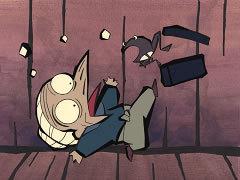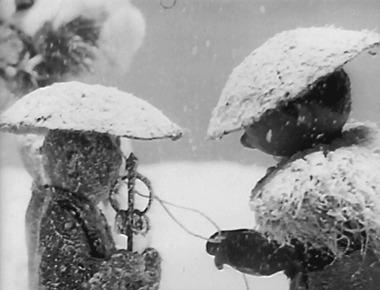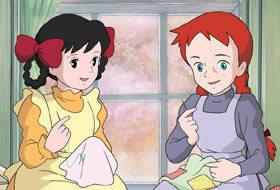Review of Echigo Folktale "Attentengano": A fusion of tradition and modernity

Echigo Folktale "Attentengano" - Crystallization of Tradition and CultureThe animated film "Attatenga no", based on a traditional folk tale from Koshiji Town, Niigata Prefecture, premiered on May 1, 2000. This work was produced to commemorate the 45th anniversary of the establishment of the town of Koshiji Town in Niigata Prefecture, and has received high praise, including winning the Excellence Award at the 47th Educational Film Festival and being recommended by the Japan PTA National Council. Each episode is 30 minutes long and self-contained, and has become an important medium for conveying the rich culture and history of Koshiji Town to future generations. ■ Story"Attentengano" consists of four episodes based on folk tales from the town of Koshiji. Each episode depicts a traditional story from the area in the form of animation. ≪Episode 1: Bota and Frog≫This episode begins with a scene in which a mean old woman tells a botamochi rice cake that if the bride tries to eat it, she will turn into a frog. The story depicts how the bride finds out this secret and deals with it. This is a story that tests the bride's wisdom and courage. ≪Episode 2: Enlightenment≫A monster with an eye appears in front of a woodcutter who is warming himself by lighting a fire on dead wood. This monster is called "Satori" and keeps guessing what the woodcutter is thinking. The story shows how the woodcutter escapes from the monster. ≪Episode 3: The Fox's Lantern≫An old man who is lost on the street at night picks up a beautifully designed lantern dropped by a fox. The next day, the old man reluctantly returns the lantern, but what did he see in it? This episode depicts the relationship between foxes and humans. <Episode 4: Three Bills>A young monk from a temple gets lost and is given a place to stay in a mountain laurel hut. The story depicts the boy's struggle to escape from being eaten using a charm and finally make it to the temple. In this episode, the boy's wisdom and courage are put to the test. ■Explanation"Attentengano" is based on old tales passed down by Takahashi Hana, who lives in the Higashiya district of Koshiji Town, Mishima County, Niigata Prefecture. Takahashi Hana was born in 1914, and has performed over 100 old tales heard from her grandmother, mother, and older brother in various places as "Hana's Old Tales." This anime is an animated version of four stories selected from those stories. In modern times, there are fewer opportunities to tell old tales at home, but this anime was produced to convey the culture of "storytelling" to children. The aim is to make people feel the kindness of the Echigo dialect and the fun of old tales. It can be said to be an important work for protecting the traditional culture of Koshiji Town and passing it on to the next generation. ■CastMany talented voice actors participated in this work. The main cast is as follows:
Hana Takahashi's video appearance is a rare opportunity to hear her speak directly. ■ Main staffMany staff members were involved in the production of "Attentengano". The main staff members are as follows:
All of these staff members came together to create a beautiful animation of the traditional folk tales of Koshiji Town. ■Subtitle"Attatenganoo" consists of the following four episodes.
■ Evaluation and recommendation"Attatenga no" is an important work that conveys the traditional folk tales of Koshiji Town to future generations in the form of animation. Its value has been recognized by the fact that it won the Excellence Award at the Educational Film Festival and was recommended by the Japan PTA National Council. This work not only conveys to children the joy of old tales and the kindness of the Echigo dialect, but also serves as an important medium for preserving local culture. In today's world, where opportunities to tell old tales at home are dwindling, this anime will be an opportunity to reevaluate the culture of "storytelling." Although each episode has a different theme, they all share the common theme of the importance of wisdom and courage. It is enjoyable not only for children but also for adults. I highly recommend it to anyone who is interested in local traditions and culture. ■ Detailed information and supplementary information"Attentengano" is an animated film based on a traditional folk tale from Koshiji Town, and contains many cultural elements in its background. Below we provide further information and supplementary information. ■ History and culture of KoshijichoKoshiji Town in Niigata Prefecture is an area rich in nature and history. The Higashiya district in particular is known as a treasure trove of old tales. The old tales that Takahashi Hana has passed down reflect the culture and history of the area. Koshiji Town is a traditional agricultural region that has existed since the Edo period, and is the birthplace of many folk tales and legends. These folk tales reflect the lives and beliefs of the local people and are an important cultural heritage. "Attatenga no" is an important work that will pass on these folk tales to future generations in the form of animation. ■ Background of animation productionThe production of "Attentengano" was undertaken to commemorate the 45th anniversary of the establishment of the town of Koshiji. As part of this commemorative project, the aim was to pass on traditional folk tales of the region to future generations by turning them into animation. The production was carried out in cooperation with Mushi Productions, and while respecting the local culture, it was also carefully crafted to be enjoyable for children today. In particular, the character designs and art direction were designed to reflect the scenery and traditional costumes of the area, bringing out the charm of Koshijicho to the fullest. ■Details for each episode≪Episode 1: Bota and Frog≫This episode begins with a scene in which a mean old woman tells a botamochi rice cake that if the bride tries to eat it, she will turn into a frog. The story depicts how the bride finds out this secret and deals with it. This is a story that tests the bride's wisdom and courage. This episode depicts the relationships between family members and the importance of wisdom and courage. In particular, it is interesting to see how the daughter-in-law overcomes the traps set by her wicked grandmother. It also depicts the kindness of the Echigo dialect and the traditional food culture of the region (Botamochi). ≪Episode 2: Enlightenment≫A monster with an eye appears in front of a woodcutter who is warming himself by lighting a fire on dead wood. This monster is called "Satori" and keeps guessing what the woodcutter is thinking. The story shows how the woodcutter escapes from the monster. This episode depicts the importance of wisdom and courage. One of the highlights is how the woodcutter overcomes Satori's trap. It also depicts the natural environment of Koshiji and the traditional beliefs of the area. Satori is a legendary figure in Koshiji, and this episode gives us an insight into his cultural background. ≪Episode 3: The Fox's Lantern≫An old man who is lost on the street at night picks up a beautifully designed lantern dropped by a fox. The next day, the old man reluctantly returns the lantern, but what did he see in it? This episode depicts the relationship between foxes and humans. This episode depicts the relationship between foxes and humans, and the importance of wisdom and courage. One of the highlights is how the old man returns the fox's lantern. It also depicts the natural environment of Koshijicho and the traditional beliefs of the area. Foxes are legendary in Koshijicho, and this episode gives you an insight into their cultural background. <Episode 4: Three Bills>A young monk from a temple gets lost and is given a place to stay in a mountain laurel hut. The story depicts the boy's struggle to escape from being eaten using a charm and finally make it to the temple. In this episode, the boy's wisdom and courage are put to the test. This episode depicts the importance of wisdom and courage. One of the highlights is how the boy overcomes the traps of the Yamamba. It also depicts the natural environment of Koshiji Town and the traditional beliefs of the area. The Yamamba is a legendary figure in Koshiji Town, and this episode gives you an insight into its cultural background. ■ Recommendations and how to watch"Attatenga no" is an important work that conveys the traditional folk tales of Koshiji Town to future generations in the form of animation. Its value has been recognized by the fact that it won the Excellence Award at the Educational Film Festival and was recommended by the Japan PTA National Council. This work not only conveys to children the joy of old tales and the kindness of the Echigo dialect, but also serves as an important medium for preserving local culture. In today's world, where opportunities to tell old tales at home are dwindling, this anime will be an opportunity to reevaluate the culture of "storytelling." Although each episode has a different theme, they all share the common theme of the importance of wisdom and courage. It is enjoyable not only for children but also for adults. I highly recommend it to anyone who is interested in local traditions and culture. You can watch it on the official Koshiji Town website or through educational institutions. It is also available for purchase on DVD and video, so you can watch it easily. Please enjoy the traditional folk tales and culture of Koshiji Town through this work. |
>>: What is the great power that Ojarumaru's tiny thing possesses? A thorough review!
Recommend
"Harry Potter" cast reunion show childhood photos wrong Emma is not the other Emma
After the recent 20-year reunion show of the &quo...
The appeal and reviews of "Soreike! Anpanman: Robori and the Warm Presents": A new adventure in the Anpanman series
"Let's Go! Anpanman: Robory and the Warm...
The effective playback volume of the online drama "Chinese Paladin 4" exceeded 100 million
Despite widespread criticism online and even call...
The theme is revenge! The latest trailer for the second season of "Idol Saga" is released
The second season of the classic anime "Zoo ...
Behind the scenes of the live-action movie "The Little Mermaid" Prince Ariel has a lot of kissing scenes
Today (April 14), the behind-the-scenes featurett...
The visual image of the third season of TV animation "Nichijou no Nichirou" will be broadcast in January next year
According to the official Twitter account, the th...
The appeal and reviews of the animated film "Oyako Gekijo": a moving story about family love
The appeal and evaluation of the anime "Oyak...
It's not exile, it's diversification! Naruto Boruto: Naruto Next Generations rarely moves to another platform
On July 20, the latest sequel of Shueisha's c...
The latest trailer for the new Sailor Moon movie will be released on January 8, 2021
The latest "Sailor Moon" theatrical ver...
A thorough review of the reconciliation episode from "Plastic Sister"! The touching reunion scene brings tears to your eyes
"Plastic Sister Reconciliation Chick" -...
The latest volume of the hardcore comic masterpiece "Chainsaw Man" is released, and the total sales of the series exceeds 6.4 million
The latest 10th volume of the hard-core manga mas...
Digging for emotional details! New trailer for the acclaimed animated film "In This Corner of the World"
The new version of the highly acclaimed dark hors...
"Ryukojikan" review: A masterpiece anime that depicts the sadness and healing of everyday life
"Railroad Crossing Time" - The brillian...
"Kyo-chan the Horror" review: The perfect balance of horror and laughter
Kyo-chan the Terrified: A mix of dark humor and e...
The new trailer for the webtoon adaptation "The Girl I Like Speaks Too Much in Dialect" was released and will be broadcast in January 2025
The online comic "The Girl I Like in Okinawa...









